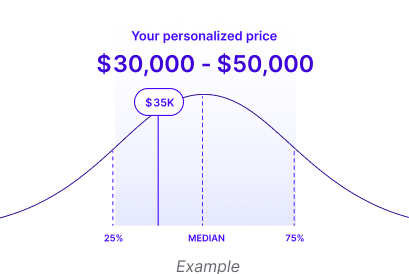Icertis
$48,360–$48,360per year
Fast, fair, easy pricing. No sales call required.
Icertis
|Visit icertis.com
How much does Icertis cost?
Icertis operates within the contract management software market, primarily targeting enterprise businesses with advanced solutions to streamline contract lifecycles. When negotiating pricing with Icertis, it's crucial to highlight the value their technology brings in terms of efficiency, compliance, and risk management. Their platform has been recognized as a leader in its field, which can be leveraged to justify a more favorable deal.Given the competitive landscape of contract management solutions, potential customers should explore options for discounts or promotional pricing, especially for new clients or larger contracts. Engaging with multiple stakeholders within the organization, such as procurement, legal, and finance, can further emphasize the necessity of a tailored pricing structure that meets specific business needs.
See detailed pricing for your specific purchase
AI Quote Analysis
Upload your quote to check if you’re getting a fair price, under 2 minutes and completely free.

How does Icertis price and package their products?
View pricing on Icertis's website
Product:
Standard
Not availablePayment Terms: Not specifiedPopular Features: Not specified
Other companies you may be interested in
Negotiating with Icertis
Negotiation Tips
Presenting competitors as viable alternatives can create urgency for the supplier to present better pricing or contract terms. It emphasizes that you are actively evaluating multiple options, making it clear that if the current proposal does not meet your financial constraints or needs, you may pursue alternatives. Highlight the benefits offered by competitors and position them against Icertis to justify your request for better terms.
Negotiate against any proposed uplift by arguing that your organization expects a stable pricing model during renewal. This tactic works best if you have a strong case for pricing being tied to performance or customer numbers remaining constant. Make it clear to the supplier that the lack of uplift is a critical term for your organization to continue the partnership.
By eliminating auto-renewal from your contract, you protect your organization from being bound to pricing terms that may not be beneficial in the future. Use this leverage by explaining that internal policy now prevents entering contracts with auto-renew clauses, thereby providing you flexibility to reassess the deal annually.
Offering to act as a reference or to participate in a case study can incentivize Icertis to provide better pricing or terms. Vendors value testimonials from satisfied customers, and the opportunity to showcase their product's effectiveness can be attractive. However, ensure you receive a reciprocal benefit in terms of pricing reductions.
Request a one-time discount based on budgetary constraints set by your finance team. Emphasize that finance has only allocated a specific budget, and since this discount isn't clearly labeled as a one-time offer, it should be considered part of your ongoing financial discussions.
Considerations when buying Icertis
OwnershipPrivate
Fiscal year endDecember 31
Best months to buyJanuary, March, July, September
Payment TermsNet 30, Net 60, Annual payment upfront
Upgrades/downgradesYes, Icertis offers both upgrades and downgrades for its services, making it easy for users to adjust their resources as their needs change.
Redline thresholdRedline threshold estimate is $50k.
Additional Info
What is Icertis?
Icertis is a software company, providing contract management software to enterprise businesses.Icertis's 1 Product
Icertis
Icertis is a software company, providing contract management software to enterprise businesses.Security and compliance
DPA available
SOC2 attestation
Annual penetration tests
News that may impact Icertis pricing or negotiations
Silicon Canals
Icertis and Microsoft Deepen Collaboration to Unlock Supply Chain Value with GenAI-Powered Contract IntelligenceNovember 19, 2024Business Wire
Icertis Named a Leader in 2024 Gartner® Magic Quadrant™ for Contract Life Cycle ManagementOctober 15, 2024Business Wire
Icertis and Evisort Announce Partnership to Accelerate Contract IntelligenceMay 8, 2024